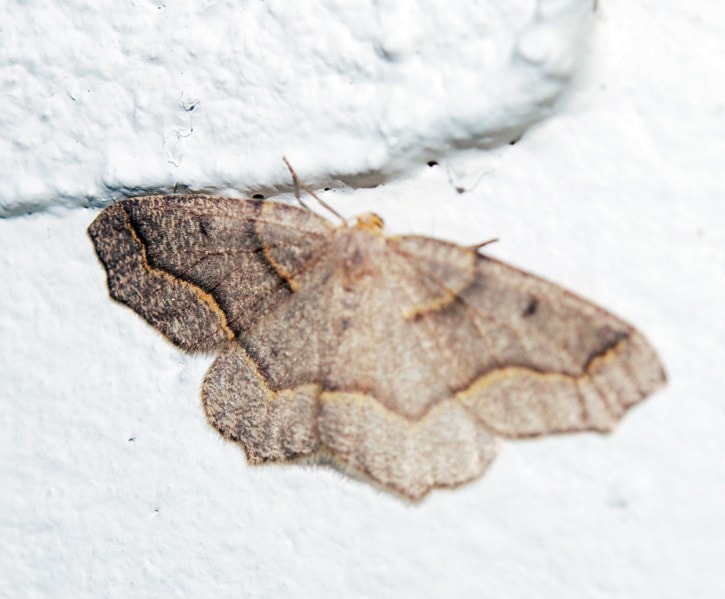Well, it's not really an attack. It's more of an infestation of sorts and a nuisance at most.
Those small, brownish moths all over town are the hemlock looper – a moth that appears about once every ten years, spreads like crazy and then dies off almost as quickly.
The Times Review wrote about them in May when the Ministry of Forests announced it would be spraying several thousand hectors of forest to combat them.
The larvae of the hemlock looper likes to feed on foliage and in an outbreak year hordes of them will feast on the tree tops, damaging the trees and potentially killing them.
“It can kill a tree in one year and certainly two, if a tree is severely defoliated,” Art Stock an entomologist with the BC Forest Service. told the Times Review in May.
Recently, the moths have been spotted all over the place in Revelstoke. There were dozens of them on the walls outside the Times Review office throughout the week, sparking our curiosity as to how severe the outbreak was this summer.
"What the moth's mean to us is that the defoliation of the forest is over for the year," said Gregg Walker, a forester with Parks Canada. "The larvae – the little caterpillars – do the deforestation of the trees. The moths are little flying, breeding units."
So, is this something to be worried about? According to Walker, this may only the start of an outbreak that could peak next year.
"We're seeing some moths but we're not seeing the number you would see if you were expecting an enormous population outbreak," he said. "People who were around in the summer of 2003, and I was so I remember this, there were ten-times as many moths as there is this summer. They were absolutely thick."
 Hemlock loopers are all over the walls outside the Times Review office, and many other places in Revelstoke. Alex Cooper/Revelstoke Times Review
Hemlock loopers are all over the walls outside the Times Review office, and many other places in Revelstoke. Alex Cooper/Revelstoke Times Review
On Wednesday he conducted an aerial survey of Mount Revelstoke and Glacier National Parks to examine the extent of the outbreak. What they uncovered was that there was light defoliation in pockets, and it was worse in Glacier National Park.
Foresters like Walker view hemlock looper outbreaks as a natural aspect of forest health. The larvae chew away on leaves, creating dead tree tops that fall to the ground and create animal habitat. Trees that weren't too badly damaged will grow a new top.
"I'm not really worried about it unless it has an impact on somebody's property or something substantive like that," said Walker.
